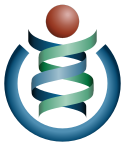Mareca
| Mareca | |||
| Stephens, 1824[1] | |||
 Przedstawiciel rodzaju – czuprynka (M. falcata) | |||
| Systematyka | |||
| Domena | |||
|---|---|---|---|
| Królestwo | |||
| Typ | |||
| Podtyp | |||
| Gromada | |||
| Podgromada | |||
| Infragromada | |||
| Rząd | |||
| Rodzina | |||
| Podrodzina | |||
| Plemię | |||
| Rodzaj | Mareca | ||
| Typ nomenklatoryczny | |||
Mareca fistularis Stephens, 1824 (= Anas penelope Linnaeus, 1758) | |||
| Synonimy | |||
| Gatunki | |||
| |||
Mareca – rodzaj ptaka z podrodziny kaczek (Anatinae) w rodzinie kaczkowatych (Anatidae).
Zasięg występowania
Rodzaj obejmuje gatunki występujące w Eurazji, Afryce, Ameryce Południowej i Północnej[9].
Morfologia
Długość ciała 46–58 cm, rozpiętość skrzydeł 75–95 cm; masa ciała samców 318–1134 g, samic 408–1043 g[10].
Systematyka
Nazewnictwo
- Mareca (Marcia, Marica): nazwa Marréco oznaczająca w brazylijskiej odmianie języka portugalskiego „mniejsze odmiany kaczek”[11].
- Penelops: łac. penelops „rodzaj kaczki lub gęsi”, różnie identyfikowane (być może lapsus od Penelope)[12]. Gatunek typowy: Anas penelope Linnaeus, 1758.
- Chauliodus (Chauliodous): gr. χαυλιοδους khauliodous, χαυλιοδοντος khauliodontos „mający wystające zęby, kły”[13]. Gatunek typowy: Anas strepera Linnaeus, 1758.
- Chaulelasmus: gr. χειλος kheilos, χειλεος kheileos „warga, krawędź”; ελασμος elasmos „płyta”[14]. Gatunek typowy: Anas strepera Linnaeus, 1758.
- Ktinorhynchus: gr. κτεις kteis, κτενος ktenos „grzebień”; ῥυγχος rhunkhos „dziób”[15]. Nowa nazwa dla Chauliodus.
Podział systematyczny
Na podstawie badań filogenetycznych takson ten został ponownie wyodrębniony z Anas[16][17]. Do rodzaju należą następujące gatunki[18]:
- Mareca falcata (Georgi, 1775) – czuprynka
- Mareca strepera (Linnaeus, 1758) – krakwa
- Mareca penelope (Linnaeus, 1758) – świstun zwyczajny
- Mareca americana (J.F. Gmelin, 1789) – świstun amerykański
- Mareca sibilatrix (Poeppig, 1829) – świstun chilijski
Fragment kladogramu obejmujący gatunki z rodzaju Mareca[19]:
| Mareca |
| ||||||||||||||||||||||||
Przypisy
- ↑ J.F. Stephens: Mareca. Wigeon.. W: G. Shaw: General zoology, or Systematic natural history. Cz. 12. Londyn: Printed for G. Kearsley, 1824, s. 130. (ang.).
- ↑ J.J. Kaup: Skizzirte Entwickelungs-Geschichte und natürliches System der europäischen Thierwelt : Erster Theil welcher die Vogelsäugethiere und Vögel nebst Andeutung der Entstehung der letzteren aus Amphibien enthält. Darmstadt: In commission bei Carl Wilhelm Leske, 1829, s. 31. (niem.).
- ↑ W. Swainson. On those birds which exhibit the typical perfection of the family of Anatidæ. „Journal of the Royal Institution of Great Britain”. 2 (4), s. 19, 1831. (ang.).
- ↑ W. Warlow. Systematically arranged Catalogue of the Mammalia and Birds belonging to the Museum of the Asiatic Society, Calcutta. „The journal of the Asiatic Society of Bengal”. 2, s. 100, 1833. (ang.).
- ↑ W. Swainson: On the natural history and classification of birds. Cz. 2. London: John Taylor, 1837, s. 366. (ang.).
- ↑ Ch.L. Bonaparte: A geographical and comparative list of the birds of Europe and North America. London: J. Van Voorst, 1838, s. 56. (ang.).
- ↑ T.C. Eyton: A monograph on the Anatidae, or duck tribe. London: Longman, Orme, Brown, Green, & Longman, Paternoster-Bow and Eddowes, Shrewsbury, 1838, s. wstęp. (ang.).
- ↑ L. Olphe-Galliard: Contributions à la faune ornithologique de l'Europe occidentale: recueil comprenant les espèces d’oiseaux que se reproduisent dans cette région ou qui s’y montrent régulièrement de passage, augmenté de la description des principales espèces exotiques les plus voisines des indigènes ou susceptibles d’ètre confondues avec elles, ainsi que l’énumération des races domestiques. Bayonne: L. Lasserre, 1888, s. 49. (fr.).
- ↑ F. Gill, D. Donsker & P. Rasmussen (red.): IOC World Bird List (v11.2). [dostęp 2022-01-02]. (ang.).
- ↑ C. Carboneras: Family Anatidae (Ducks, geese and Swans). W: J. del Hoyo, A. Elliott & J. Sargatal: Handbook of the Birds of the World. Cz. 1: Ostrich to Ducks. Barcelona: Lynx Edicions, 1992, s. 601–602. ISBN 84-87334-10-5. (ang.).
- ↑ The Key to Scientific Names ↓, Mareca [dostęp 2022-01-03].
- ↑ The Key to Scientific Names ↓, Penelops [dostęp 2022-01-03].
- ↑ The Key to Scientific Names ↓, Chauliodus [dostęp 2022-01-03].
- ↑ The Key to Scientific Names ↓, Chaulelasmus [dostęp 2022-01-03].
- ↑ The Key to Scientific Names ↓, Ktinorhynchus [dostęp 2022-01-03].
- ↑ J. Gonzalez, H. Düttmann & M. Wink. Phylogenetic relationships based on two mitochondrial genes and hybridization patterns in Anatidae. „Journal of Zoology”. 279 (3), s. 310–318, 2009. DOI: 10.1111/j.1469-7998.2009.00622.x. (ang.).
- ↑ E.C. Dickinson (red.) & J.V. Remsen Jr.: The Howard and Moore Complete Checklist of the Birds of the World. Cz. 1: Non-passerines. Eastbourne: Aves Press, 2013. ISBN 978-0-9568611-0-8. (ang.).
- ↑ Systematyka i nazwy polskie za: P. Mielczarek & M. Kuziemko: Plemię: Anatini Leach, 1820 (wersja: 2021-04-05). [w:] Kompletna lista ptaków świata [on-line]. Instytut Nauk o Środowisku Uniwersytetu Jagiellońskiego. [dostęp 2022-01-03].
- ↑ J. Boyd III: Anatidae: Ducks, Geese, Swans. [w:] Taxonomy in Flux Checklist 3.08 [on-line]. John Boyd’s Home Page. [dostęp 2022-09-07]. (ang.).
Bibliografia
- The Key to Scientific Names, J.A. Jobling (red.), [w:] Birds of the World [online], S.M. Billerman et al. (red.), Cornell Lab of Ornithology, Ithaca (ang.).
Media użyte na tej stronie
Autor: (of code) -xfi-, Licencja: CC BY-SA 3.0
The Wikispecies logo created by Zephram Stark based on a concept design by Jeremykemp.
Autor: Alpsdake, Licencja: CC BY-SA 3.0
Falcated duck (Anas falcata), male, in Maibara, Shiga pref., Japan.

